WHEN I FIRST MET UP with Fen Grass-of-Parnassus, about 25 years ago, the attraction was, I freely admit, all physical and not the least bit intellectual or even carnal.
My fondness for this plant came by way of its long, elegant stems bearing a single symmetrical flower of white petals marked with pert, green striping. And even though it had me at those petals, Fen Grass-of-Parnassus also flashed reproductive parts surrounded by an unusual array of 15 glassy, yellow orbs.
From the day I first laid eyes on them, those fetching flowers alone were enough of a turn-on. But sometime later in the company of Fen Grass-of-Parnassus I encountered a globally imperiled bee, and was among the few people in the world to have photographed it on its flower. That was good.
But only after that did I discover the extent to which Fen Grass-of-Parnassus courts its bee in the drama of reproduction. So compelling were the flower’s antics and deceptions that I set up two study plots, which I visited day after day, regardless of rain or mosquitoes or my mood, in order to learn more about how Fen Grass-of-Parnassus, um, you know … gets it on.
Along the way, in my quarter century visiting with this plant, I came to realize a kind of intimacy with Fen Grass-of-Parnassus matched perhaps only by the human capacity for inquisitiveness and joy that we reserve for one another and the sacred things we create together. All that from a plant now in bloom and its bee in flight. Here are their stories, which are my own stories as well.

The Gods and a Deception
Mt. Parnassus, in central Greece, seemed to be a kind of second home to the gods. Apollo met Orpheus there and gave him his golden lyre. The Oracle of Delphi espoused wisdom below its slopes. And Parnassus was the mountain home of the Muses. More to the point, Mt. Parnassus is limestone.
Not a grass, but rather a perennial plant, Fen Grass-of-Parnassus (Parnassia glauca) grows mostly in fens or other seepy places enriched with calcium from limestone or other sources. The world has more than 50 different Parnassia species, many of which have similar or more ornate flowers sporting green stripes.
Those stripes are usually nectar guides pointing pollinators toward sugary rewards at the base of the flower. But have a closer look at this flower. In my images above and below you’ll see: five petals, five stamens with their almond-colored anthers positioned out between petal nodes, and a green pistil at the flower’s center. All fairly standard.
But also note those 15 yellow globules arrayed around the pistil, each resembling a drop of nectar (perhaps nectar of the gods). They are the tips of something called a “staminode” — a flower part that resembles a stamen but does not produce any pollen. They instead produce a ruse.
Those droplets, like glass candies, are fakes. There is nothing sweet about them. I have watched ants, flies, and other pollinators fall for those orbs, including the rare and imperiled bee, whose life story I shall get to soon.
A Flower’s Reproductive Antics
More fascinating than the bee and the staminodes, however, at least for me, are the gyrations of the flower’s male parts, its five stamens. They go to great lengths, literally and figuratively, to dust visiting insects with pollen. To understand the choreography of all this, consider the three images below representing a single flower on three consecutive days (the images aren’t actually of the same flower, but you’ll get the idea).
What I call a Day 0 flower at the left has just bloomed: its five anthers (which will eventually generate pollen) are porcelain white and packed tightly around the greenish pistil (which later receives pollen in fertilization). No action here, however, until tomorrow.
On the next day, on Day 1, the first of the five stamens has made its move: its filament (or stem) at the 12-o’clock position has extended and bent downward so that the anther (now generating yellow pollen) is positioned directly over the pistil. But this anther does not pollinate its own flower’s pistil.
In the rightmost image, of a Day 2 flower, the Day 1 stamen, having completed its mission, has extended its filament even more and swung back out of the way at 12 o’clock, its anther spent (and brown) and now located at the outer edge of the flower corolla. The next stamen in line, today’s stamen, located at about 2 o’clock on the flower, has assumed its rightful position with its anther, now generating pollen, over the pistil.
The maneuvers continue like this until all five stamens have had their day in the sun, so to speak. When I first discovered these sequential stamen acrobatics, curiosity drove me even closer to Fen Grass-of-Parnassus. Did in fact one stamen per day make the move? Did the procession proceed clockwise or counterclockwise among the five stamens? Why one day at time? And what about the bee?
A Bee and its Flower
I found a few answers from published research on other Parnassia species, but nobody had published much on Fen Grass-of-Parnassus. And at the time, here in Vermont, we were beginning to learn more about that rare bee, called Parnassia Miner (Andrena parnassiae), which, even more so than I, has an intimate relationship with Fen Grass-of-Parnassus.
Andrena bees are miners: a female burrows into the ground and digs out multiple chambers where in each she leaves a “loaf” of pollen and nectar, upon which she lays an egg. Parnassia Miner gets that pollen and nectar for its offspring from Fen Grass-of-Parnassus. The bee is a specialist on the plant, a bit like Koalas specializing in eucalyptus or Monarch butterfly caterpillars eating only milkweeds. Yes, you might find Fen Grass-of-Parnassus in places without the bee; you will almost never find the bee without Fen Grass-of-Parnassus.
Even so, the bee is not entitled to all of a flower’s pollen for its young; some of it goes for pollination, which Fen Grass-of-Parnassus accomplishes by way of those daily stamen gyrations and the fake nectar droplets. When a Parnassia Miner or similar bee visits the flower and takes the bait (the yellow beads) its body is positioned just right to be dusted with pollen from that day’s strategically-placed anther, which is happening in this image below. Note the four brown (spent) anthers out between the petals, and the Day 5 anther on its white filament touching the bee under the base of its abdomen.
Basically, with its fake candy, Fen Grass-of-Parnassus orients its bee so that it will pick up and carry pollen from one flower to another, plant after plant, including along the way to a flower whose pistil is ready for fertilization. The bee fosters “xenogamy” — a flower breeding not with itself but with another, which is good for the species by mixing its genetics.
To get confirmation of all this, I visited my study plots of Fen Grass-of-Parnassus day after day. In more than 100 formal flower observations (and hundreds of others), I discovered that the stamen gyrations do not play out exactly according to my experimental hypotheses. On average, one stamen per day does indeed make the maneuver, but sometimes two per day. And they don’t take turns in some orderly clockwise or counterclockwise routine. I see no pattern to the stamen acrobatics — at least not yet.
By issuing pollen one stamen (sometimes two) per day, Fen Grass-of-Parnassus probably makes the most efficient use of the bee as a pollinator, and lengthens the time (to about five days) for a given flower’s contribution to reproduction. Crucially, never did I see any pistil ready to receive pollen for fertilization until all five stamens had completed their mission; this prevented self-fertilization of a given flower (more on this in two cool photos below).
So, on a plant named for a haven of the Greek gods, the sex is not necessarily orderly or predictable. It’s complicated. And that’s fine.
Why We’re Here
By no means a botanist, I am driven to these flowers by inordinate beauty and routine curiosity. Taken together, at least for me, beauty and curiosity breed exuberance. But something more as well. During my daily visits with these flowers, I have come to know their unique folds and flaws and tendencies. Each bloom is stage with a plot line and a cast of four characters: the stamens, the fake nectar, the pistil, and the bee. On any flower, on any day, together they act out a drama worthy of Shakespeare.
That is why I can look at one Fen Grass-of-Parnassus flower after another and never grow tired of this drama. A single flower is at the same time an investigation and a mantra during a meditation in nature. I am never weary of these blooms — not any of them, ever. Nature is like that. There is drama in every living thing. All we need is go outside and look.
Then again, even as I collect data so that I might publish my study results, I never lose sight of what first brought me literally to my knees in the company of Fen Grass-of-Parnassus: Sometimes a flower is just a flower — simply and objectively beautiful.
Essays like this one don’t grow on trees or bloom like flowers. They rise instead from my four decades dedicated to the study of nature and the craft of writing. It’s how I earn a living. If you’re so inclined and able, please consider becoming a paid subscriber, even for a few months, so that I can keep writing for everyone, including folks who can’t afford the subscription fee. Thanks!
Bonus Images
This first pair of images show how a flower’s pistil cannot be fertilized until after all five stamens have completed their mission. On the left is a Day 5 flower with the fifth and final stamen (at 6 o’clock) positioned with its brown anther nearly over the pistil (dead center). The very next day, the Day 5 stamen has retracted to join its four brothers, and the flower’s pistil has developed its four-parted white stigma, where fertilization can now begin (perhaps during a visit by a rare bee).
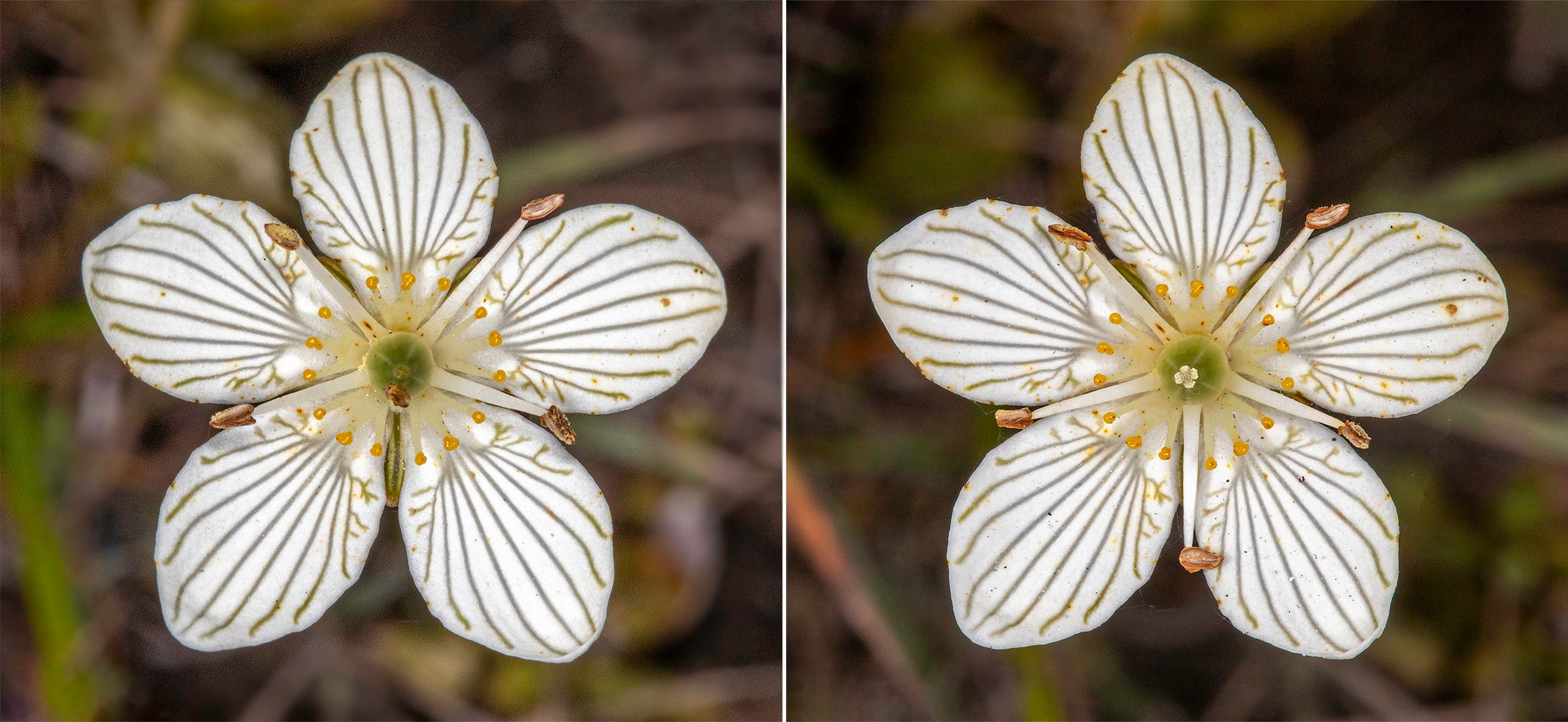
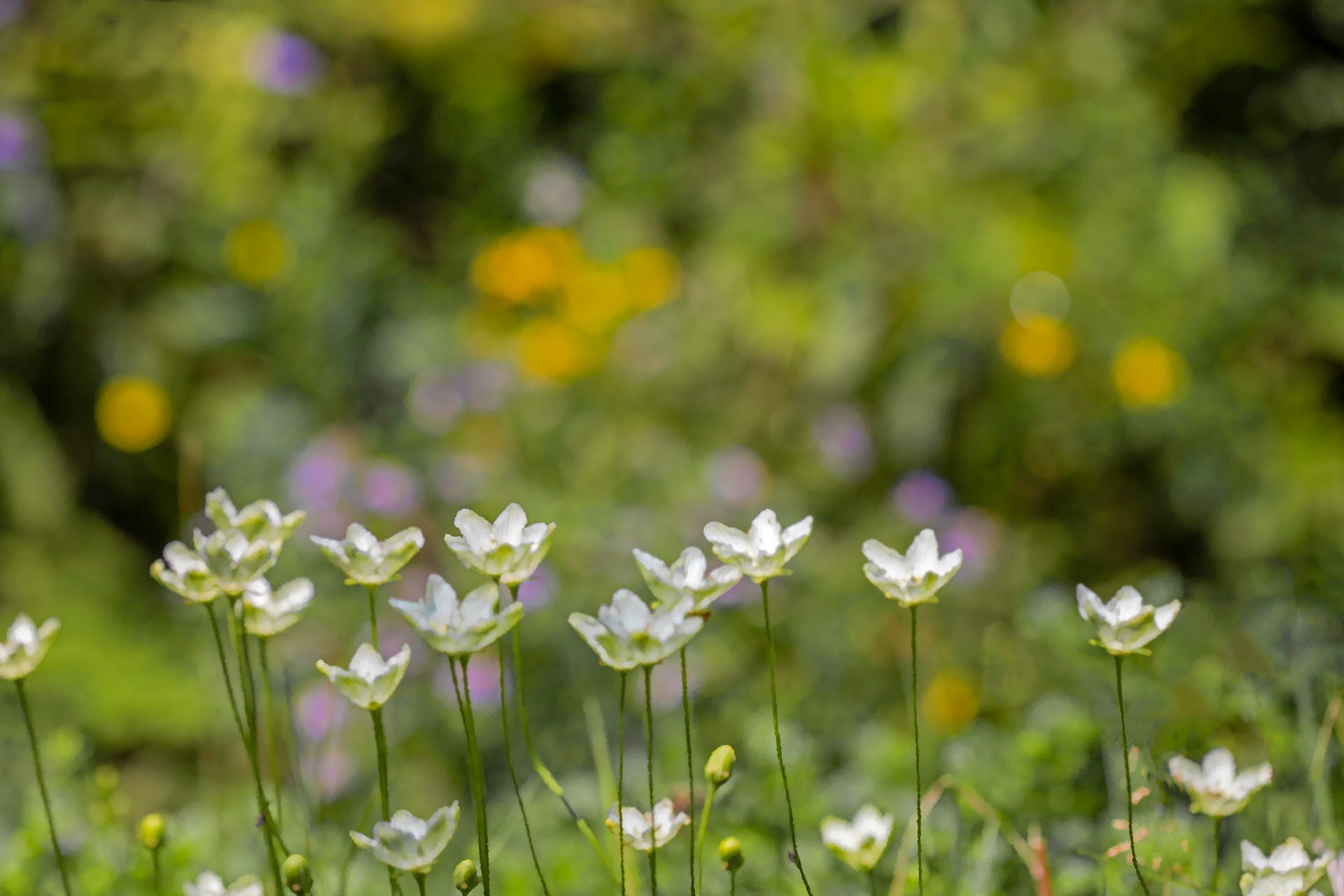
Postscripts and Acknowledgments
Besides the plants itself, inspiration for this humble field project comes from the fine work of W. Scott Armbruster and colleagues, who published on another Parnassia species. Max McCarthy is doing groundbreaking work on Parnassia Miner and its favorite plant. Scott and Max kindly replied to a few of my questions about these plants and their bee.
Here in Vermont, the entomologist Spencer Hardy turned many of us on to Parnassia Miner, and has done a ton of noble work for native bee conservation.
My friend and colleague Steven Daniel, an exquisitely talented botanist and all-around naturalist, first alerted me to this once-a-day (more or less) stamen maneuver. The Vermont State Botanist Grace Glynn and I began these stamen observations in 2021. Tracy Sherbrooke also watches Fen Grass-of-Parnassus flowers and pollinators; her findings appear similar to mine.
The flower images with black backgrounds, indeed field shots and not in a studio, result from camera settings: a stopped down lens (usually f22 or f24) and front-of-the-lens lighting (Canon Twin-Lite on my 100mm macro lens). Each image received standard edits in Photoshop.

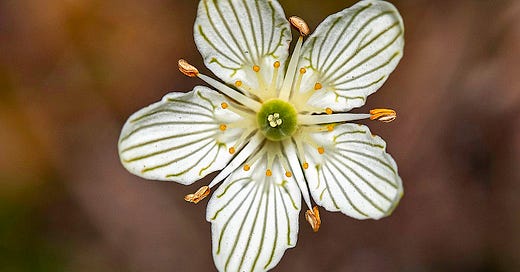


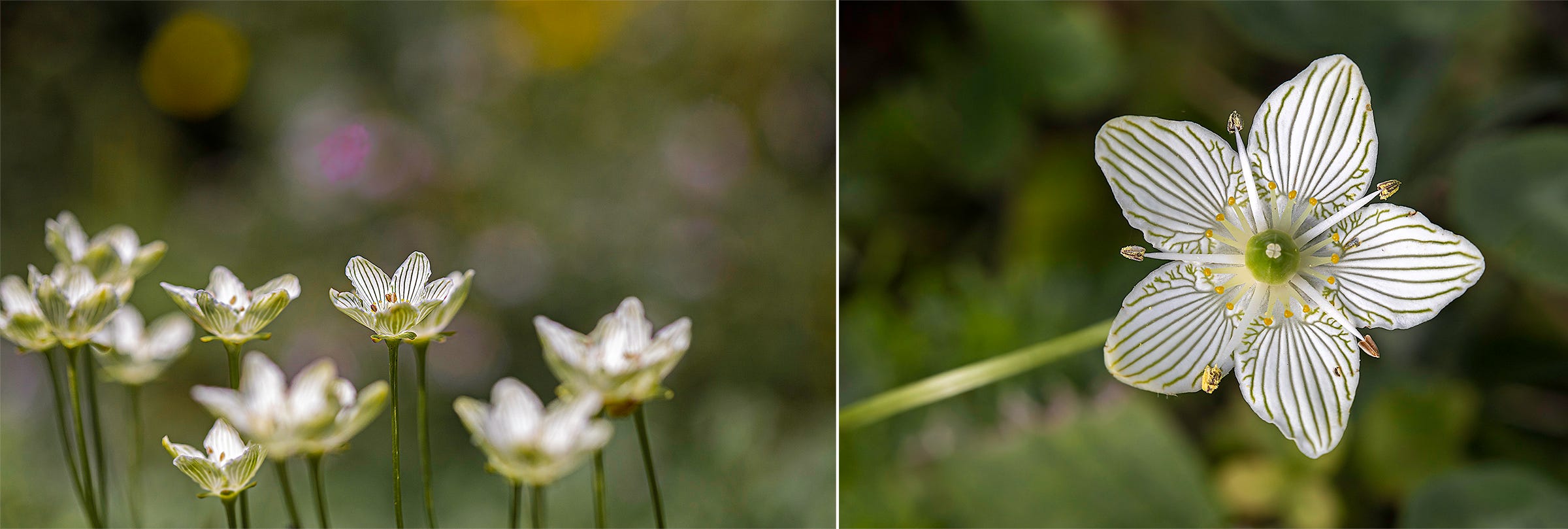
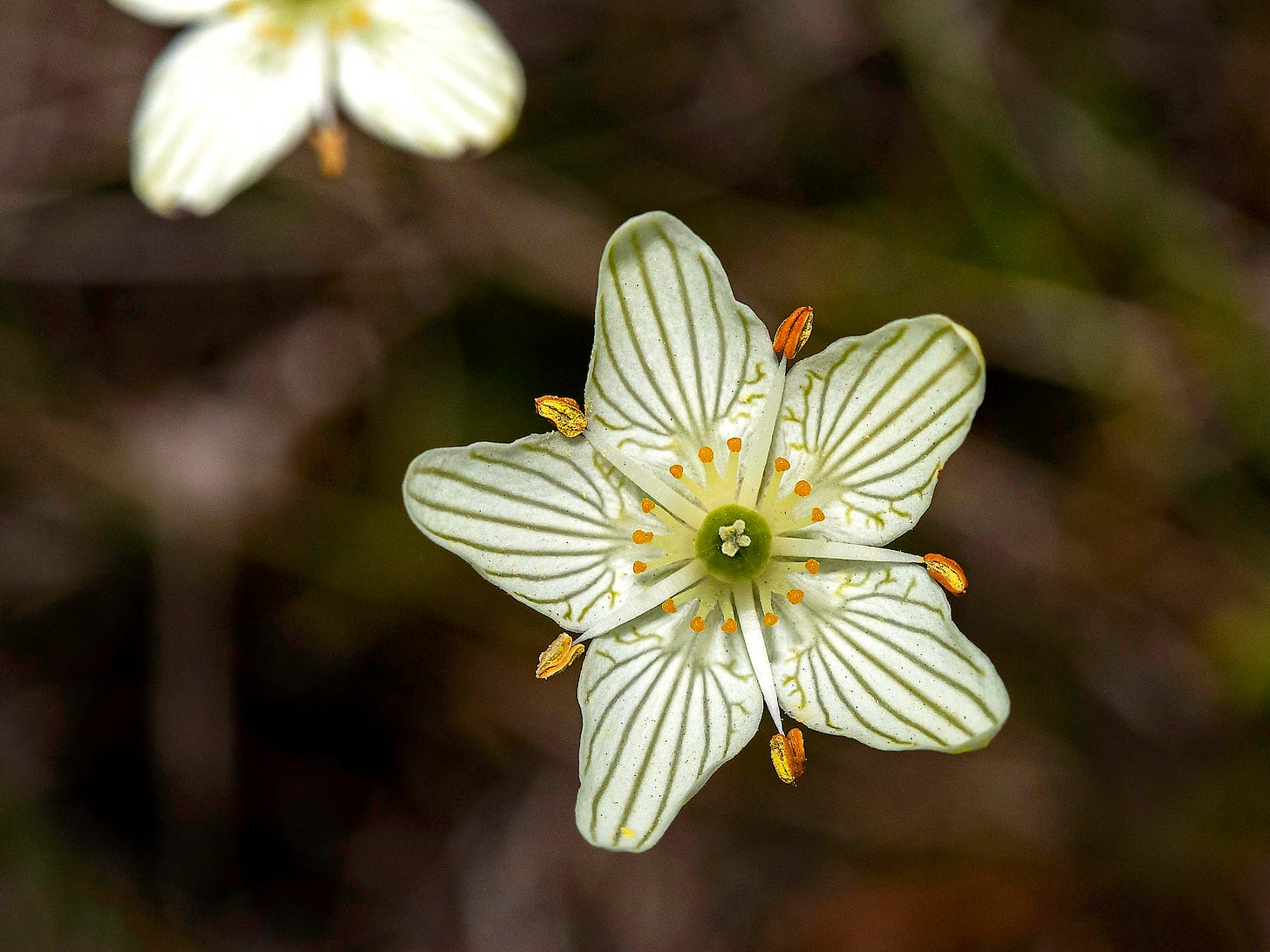
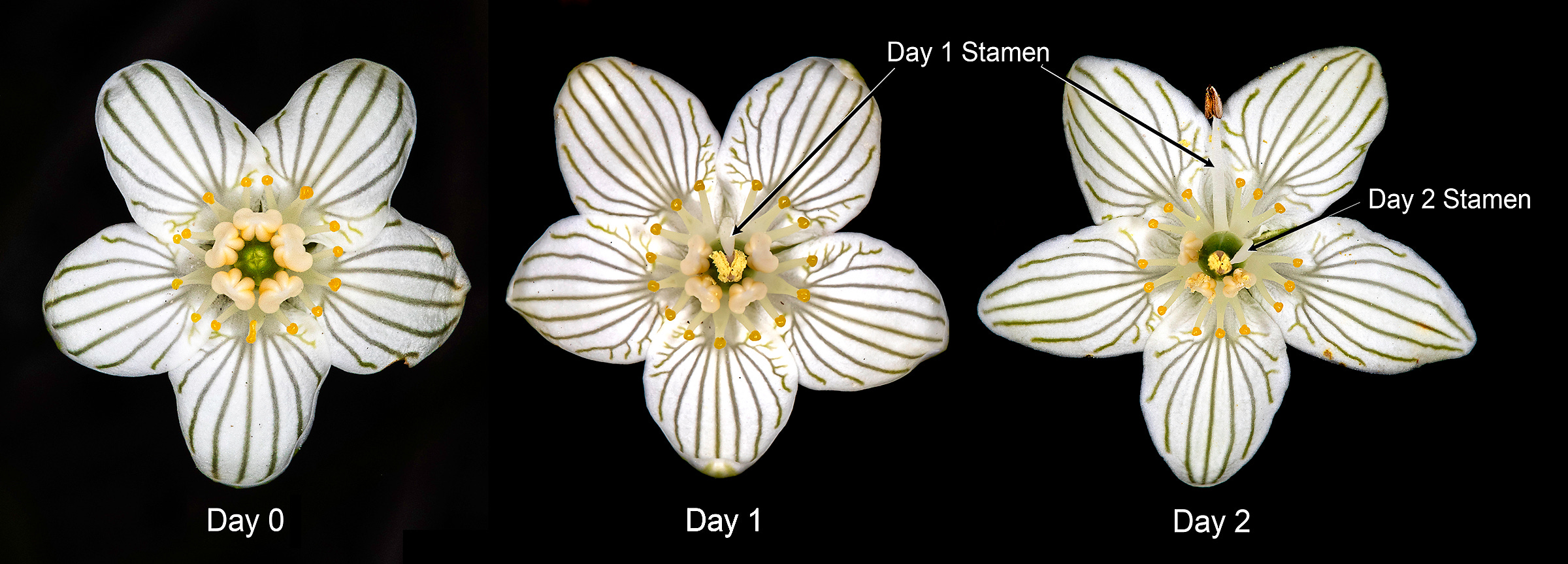
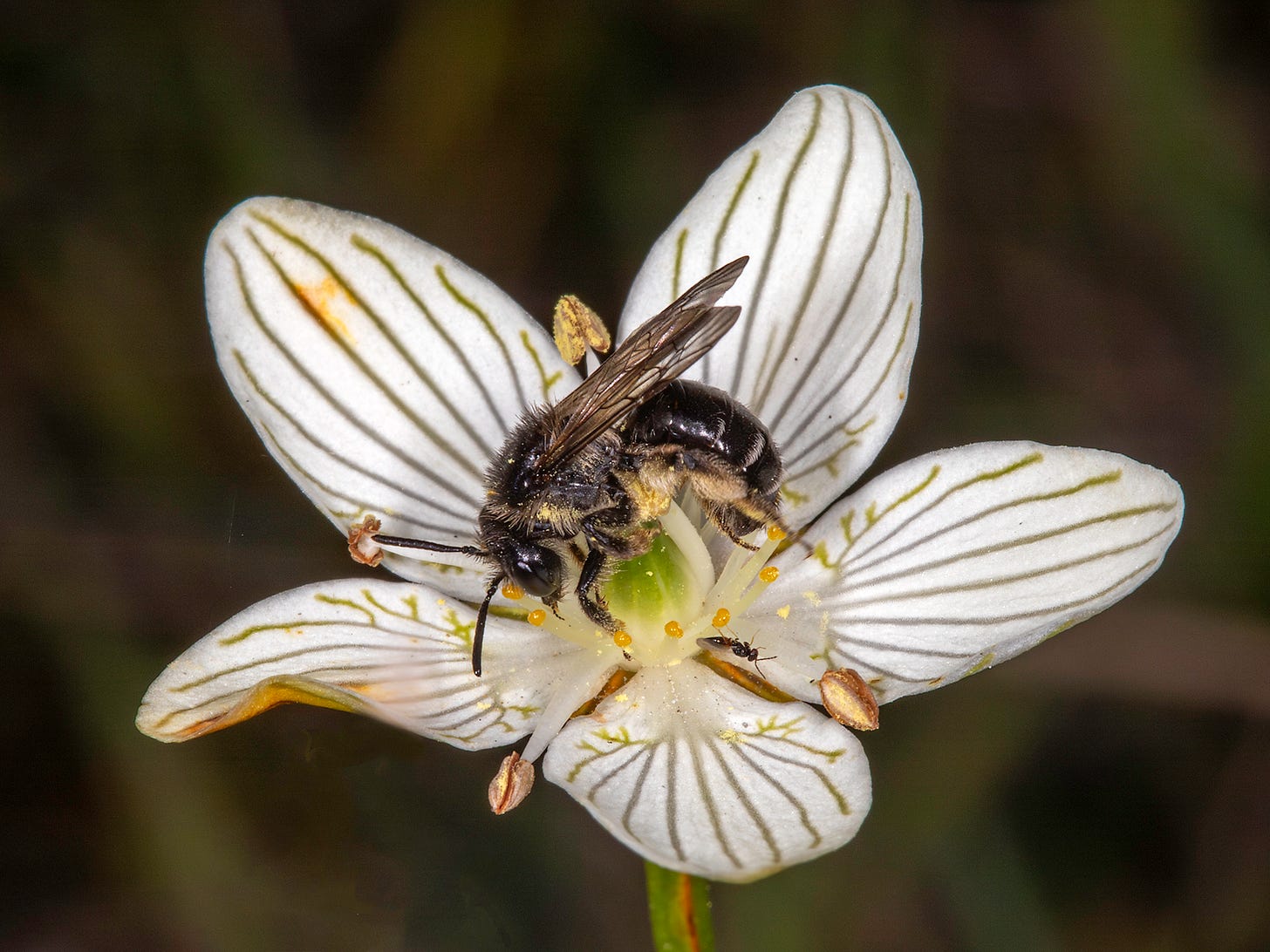


Bravo Bryan pour ces observations méticuleuses faites avec compétence et rigueur puis racontées avec un réel talent pour la vulgarisation et l'écriture ! Je vais partager tout ça avec un groupe de discussion basé en France qui se passionne pour de telles choses. / Michel Bertrand, Sainte-Julie, Qc
Mother Nature has a worthy ally in you, Bryan. I'm honored to be included. I pass by swaths of it on our "back road" every morning as I drive to work through August and early September, and it is a sentinel of beauty. Thanks for unraveling the mysteries. Glad to know more about it and have a friend in that affinity.